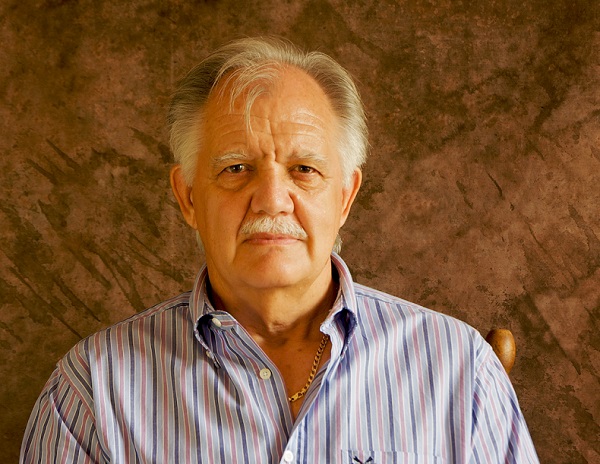Investing in the pipe infrastructure industry in South Africa – a vital factor in the growth of our economy

The Southern African Plastic Pipe Manufacturers Association (SAAPMA) has released the findings of a qualitative and quantitative survey into the plastic pipe market that was conducted in 2020 by LHA Management Consultants. This was the third quantitative survey they conducted for the plastic pipes standards body, following on previous studies in 2009, 2012 and 2017, to assess the size of the plastic pipes market vis-à-vis pipes made from alternative materials, such as concrete or galvanised steel.
According to Jan Venter, CEO of SAPPMA, it was important for them to gauge how the SAPPMA brand is perceived in the market place, as well as whether decision makers are aware of SAPPMA mission and activities. In order to do this, LHA conducted interviews with municipalities, contractors, consultants and other decision makers around South Africa.
What became clear from the research, was that significantly fewer funds have been invested in infrastructure and building projects over the past six years – causing the pipe market to shrink by an alarming 15% since 2014. Although South Africa recorded average GDP growth of 0.8 % per annum during the same period, the amount of money that was invested in building and construction projects as a percentage of GDP had declined sharply.
‘Reliable infrastructure is desperately needed in our country to ensure the supply of clean drinking water, uninterrupted sewage services and the provision of electricity, telecommunication and gas services to communities around South Africa. We are very concerned that the pipe infrastructure provision is declining on a per capita basis. This is a clear indication that the taxpayer’s money is not being spent where it is supposed to go, despite the promises made by politicians’, Venter reported.
Looking ahead
Valuable and insightful feedback was received from the respondents, which SAPPMA will use to set its agenda and priorities for the next few years:
‘It is clear that there is a need for ongoing training, communication and skills transfer in the industry. Our annual PIPES conferences, quality workshops and technical manual play an important role in this regard. We will continue educating engineers and other decision makers about pipe selection, pipes standards and pipeline design through these platforms, but will also be offering roadshows to the various provinces once the COVID-19 pandemic is over and life has returned to normal’, said Venter.
Recognising the importance of educating future engineers with practical and relevant information about plastic pipe materials, SAPPMA has begun engaging with the Department of Civil Engineering of the University of Pretoria to incorporate basic technical information into the curriculum for the third-year students.
Interview with CEO, Jan Venter
What is the agenda and which are the priorities that the Southern African Plastic Pipe Manufacturers Association (SAPPMA) will be implementing over the next few years?
SAPPMA strategy and plans include the following:
- Increasing the market awareness of plastic piping systems, including the major benefits they offer in terms of, among others, cost-effectiveness, life expectancy, environmental protection and personal health.
- Similarly, are we planning to step up the ‘education’ of the market, in terms of technical and design information, through regular webinars and workshops. The purpose is to empower designers and users to become comfortable with the design aspects of plastic pipe systems.
- Continued support of our members in terms of product standards – knowledge, interpretation, application and adherence.
- Regular media releases to highlight relevant topics.
- It needs to be said that plastic piping systems are already the dominant material in infrastructure, as yet again proved by an independent market survey early 2020.
What is the cause of the gap in ongoing training, communication and skills transfer in the industry? What solutions can assist in addressing these issues?
Part of the problem lies in the fact that student engineers at tertiary institutions are not properly exposed to plastic materials for engineering applications. We plan to help alleviate this by including as many of them as possible, in our technical webinar programme for 2021.
Apart from the foregoing, SAPPMA has in any event on an ongoing basis, dispensed design information to the market for the past 15 years. This is being done by way of technical seminars, personal consultation and the publication of an excellent Technical Manual which is regularly updated.
It needs to be highlighted that SAPPMA is a non-profit organisation and funded by its members. If this financial restraint could be alleviated, it will enable us to do a lot more for the industry and the country.
What impact will implementing upgrades have on the existing pipe networks?
If eventually the promised expenditure on pipe infrastructure does materialise, it will have a big positive effect on this very important, but underrated industry. With the soft demand of the past number of years, manufacturers suffer from chronically low gross margins. That in turn hinders them in essential upgrading of production equipment, leading to drop in efficiencies which in turn limits the ability to reduce product prices. The manufacturing (extrusion) process is a continuous one and therefore sensitive to volume and excessive stoppages.
The other very important result will be a major saving of precious water caused by leaking pipe networks, which either is past its effective life or are poorly maintained. In the third place, it should enable reaching people not currently serviced with clean potable water supply and the removal of sewage.
After four years of SA’S GDP recovery, how do you see the pipes industry evolving after 2023?
- The enforced country-wide shut down obviously had a very negative, but yet unquantified effect on the pipe industry. On top of the pre-existent strain on. manufacturers, the overall effect will take a long time to wash out of the system
- Part of the action we have taken to support members was to reduce membership fees for the current financial year, instead of the usual nominal increase. We have always had a strong focus on operating costs and will continue with this, even more so, in future.
- The other leg of our action is improved marketing – as described above.
- Historically the plastic pipe industry typically demonstrated growth, even up to triple in excess of GDP. This has slowed down to a static position even before the clamp down earlier this year. Hopefully common sense will prevail and the critical importance of this sector of the economy will start enjoying more attention.
*Sponsored Content


.svg)











